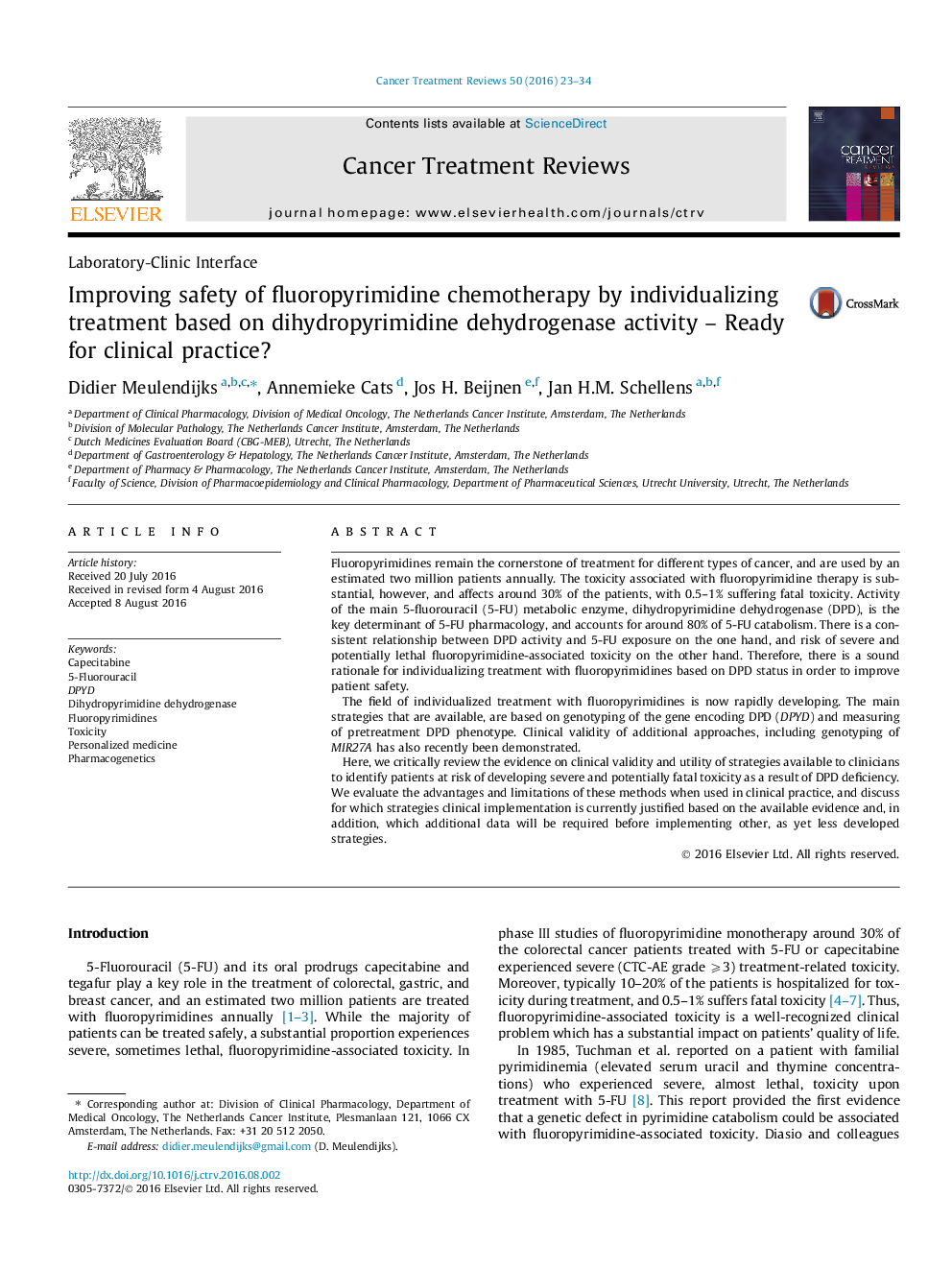| کد مقاله | کد نشریه | سال انتشار | مقاله انگلیسی | نسخه تمام متن |
|---|---|---|---|---|
| 3979718 | 1601108 | 2016 | 12 صفحه PDF | دانلود رایگان |
• Clinical validity of four DPYD variants has been robustly demonstrated.
• Upfront screening for DPYD variants followed by dose adjustment improves patient safety.
• Genotyping of MIR27A improves the predictive value of DPYD genotyping.
• There is substantial evidence for the clinical validity of pretreatment DPD phenotype.
• Future dosing strategies will focus on combined genotyping and phenotyping.
Fluoropyrimidines remain the cornerstone of treatment for different types of cancer, and are used by an estimated two million patients annually. The toxicity associated with fluoropyrimidine therapy is substantial, however, and affects around 30% of the patients, with 0.5–1% suffering fatal toxicity. Activity of the main 5-fluorouracil (5-FU) metabolic enzyme, dihydropyrimidine dehydrogenase (DPD), is the key determinant of 5-FU pharmacology, and accounts for around 80% of 5-FU catabolism. There is a consistent relationship between DPD activity and 5-FU exposure on the one hand, and risk of severe and potentially lethal fluoropyrimidine-associated toxicity on the other hand. Therefore, there is a sound rationale for individualizing treatment with fluoropyrimidines based on DPD status in order to improve patient safety.The field of individualized treatment with fluoropyrimidines is now rapidly developing. The main strategies that are available, are based on genotyping of the gene encoding DPD (DPYD) and measuring of pretreatment DPD phenotype. Clinical validity of additional approaches, including genotyping of MIR27A has also recently been demonstrated.Here, we critically review the evidence on clinical validity and utility of strategies available to clinicians to identify patients at risk of developing severe and potentially fatal toxicity as a result of DPD deficiency. We evaluate the advantages and limitations of these methods when used in clinical practice, and discuss for which strategies clinical implementation is currently justified based on the available evidence and, in addition, which additional data will be required before implementing other, as yet less developed strategies.
Journal: Cancer Treatment Reviews - Volume 50, November 2016, Pages 23–34
